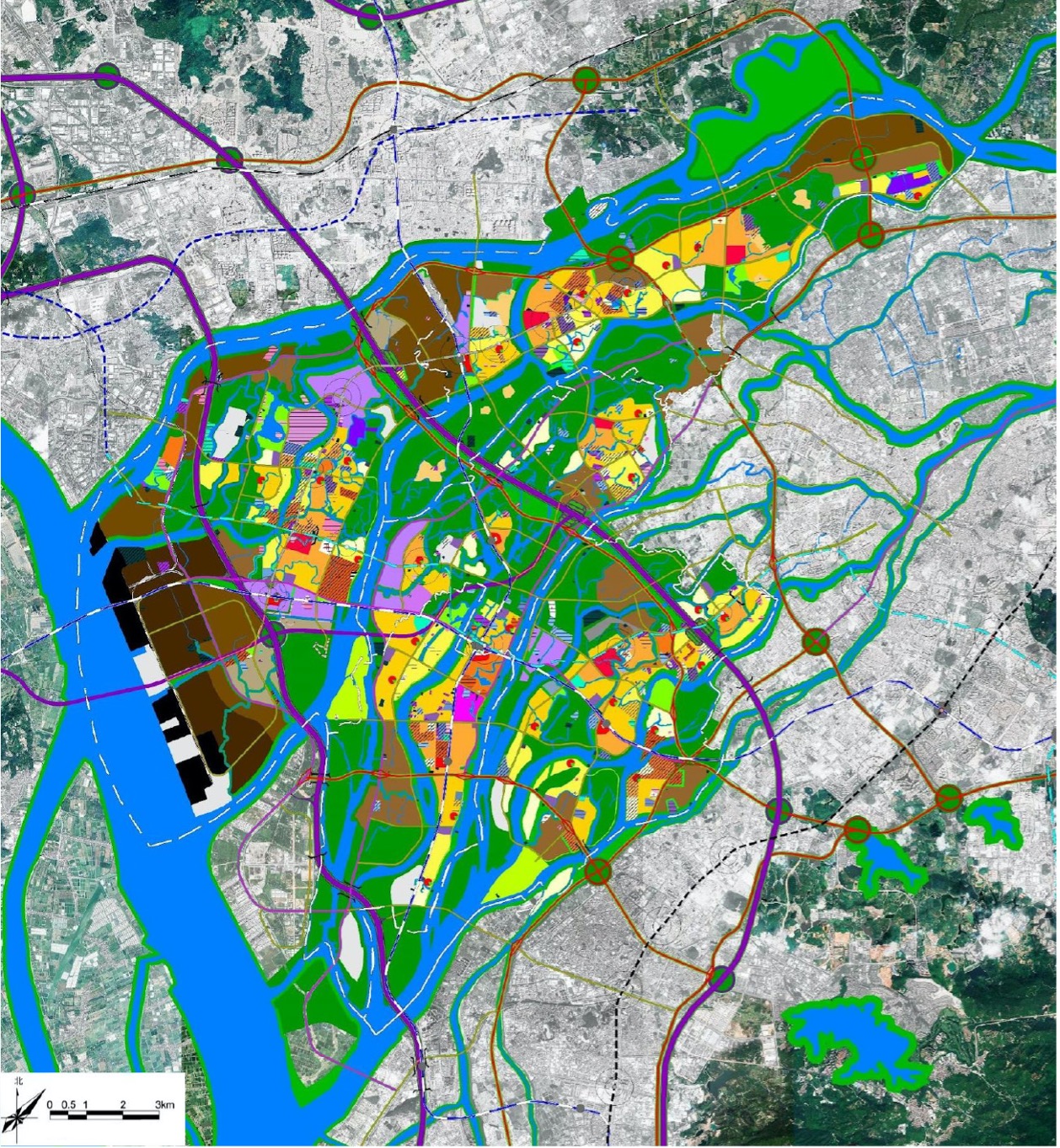Project area: 270 km²
Planning area: 126 km²
Planned population: 860,000 (2070)
Project timeline: 2019
Introduction
Despite a prime location along the riverbanks, the Dongguan Watertowns faced urban issues due to rapid urbanisation in the area. This resulted in industrial plants and trading docks being constructed in the area, causing environmental pollution problems, especially along the riverbanks. In order to alleviate these issues, a revision of the urban planning in the area is required to conserve the rich eco-environment and cultural heritage.
Location and surroundings
Located in the northwest of Dongguan City, the Dongguan Watertowns consist of five towns, namely, Zhongtang, Wangniudun, Machong, Hongmei, and Daojiao. Adjacent to Luogang, Huangpu, and Zengcheng districts of Guangzhou City in the north and Pearl River in the west. The Watertowns own the richest water system in Dongguan City and are also the only complete water towns on the east bank of the Pearl River. The numerous tributaries also divide the Watertowns into several “islands” of different sizes.
The Dongguan Watertowns are conveniently located in the middle of the Guangzhou-Hong Kong-Macau Greater Bay Area and have facilities within an hour’s commute from the Pearl River Delta Region. It also serves as the transit hub for two intercity rails and subways, as well as two expressways and other important roads such as under-river tunnels. The Watertowns retain much of the heritage of Lingnan, including historical culture with unique landscapes and exotic customs. Hence, it is important to preserve the culture and environment of this place while allowing for progress through urbanisation.
Our planning approach & considerations
Our proposed plan is based on a time horizon until the year 2070. It includes future population projections, development goals, and outlines the vision of “a creative waterfront in the Greater Bay Area, and an ecological garden in the South”. In addition, the plan prioritises the protection and optimisation of cultural heritages and the natural environment of the Watertowns.
The preservation of historical buildings and precincts, and restoration of waterways are highlighted in our proposal, which will showcase green belts of appropriate widths on both sides of the Watertowns. This in turn secures some natural ecological areas close to the river for citizens to enjoy without affecting the port operations along the Pearl River.
Applying Dr Liu’s concept of “Family of City” as the core approach for this project and with an estimated 2070 population of 860,000, we are positioning the Watertowns as a self-sustainable region. Therefore, the regional centre is planned to be located at the hub near the most convenient Dongguan West Station.
Balancing livability and economic development
Based on the “Family of City” concept, the Watertowns will be divided into five new towns, each with a population ranging from 130,000 to 200,000, and using the existing tributaries as their natural boundaries. Every new town will be self-sufficient, having a complete set of supporting facilities and own convenient internal and external road connections via adaptation to the existing road system. We are proposing a low-density urban environment for the Watertowns to create a romantic and livable urban environment, which will contrast from nearby skyscraper-filled metropolises like Guangzhou and Shenzhen.
While focusing on the convenience and quality of daily life, we also pay close attention to the economic development, especially of the development of industries. First, factories near rivers will be relocated without impacting the model of operation and the river shorelines will be freed up for daily life and leisure purposes, and reduce pollution of the river. Small parcels of industrial land will be amalgamated, replacing the former linear form with the block form. Furthermore, the use of the land will be more economical and efficient, such that more economic benefits will be produced per unit of land.
In terms of the industry development model, as Dongguan is close to Shenzhen, Guangzhou, and Hong Kong, it is recommended that the overall industrial development be appropriately upgraded to develop high-tech industries in the near future. In the proposed plan, MORROW has created several high-tech industrial parks by combining important transportation hubs such as high-speed railways and nearby higher education institutes, hence leaving sufficient room for industrial transformation in Dongguan. It is believed that the Watertowns will be an urban model of balancing the natural living environment with a robust economic development.

Overall Planning Structure of the Dongguan Watertowns

Blue-Green Structure Diagram of the Dongguan Watertowns

Transportation Structure Diagram of the Dongguan Watertowns

Spatial Structure Diagram of the Dongguan Watertowns

Overall Concept Master Plan of the Dongguan Watertowns


